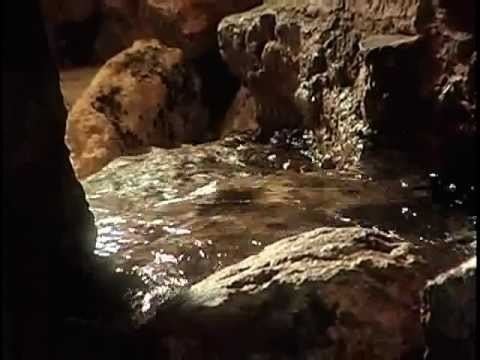Eruption height 636m | ||
 | ||
Similar | ||
The gihon spring city of david
The Gihon Spring (Hebrew: מעיין הגיחון) or Fountain of the Virgin in the Kidron Valley was the main source of water for the Pool of Siloam in the City of David, the original site of Jerusalem. One of the world's major intermittent springs—and a reliable water source that made human settlement possible in ancient Jerusalem—the spring was not only used for drinking water, but also initially for irrigation of gardens in the adjacent Kidron Valley which provided a food source for the ancient settlement.
Contents
- The gihon spring city of david
- Map of Gihon Spring Jerusalem
- Temple mount dome of rock real site over gihon spring
- Name
- Water systems
- Archaeology
- References
Map of Gihon Spring, Jerusalem
The spring rises in a cave 20 feet by 7. Being intermittent, it required the excavation of the Pool of Siloam which stored the large amount of water needed for the town when the spring was not flowing. The spring has the singular characteristic of being intermittent, flowing from three to five times daily in winter, twice daily in summer, and only once daily in autumn. This peculiarity is accounted for by the supposition that the outlet from the reservoir is by a passage in the form of a siphon.
The spring is under the control of the Israeli settler organization Ir David Foundation ("El'ad"); it is sometimes used by Jewish men as a sort of mikvah.
Temple mount dome of rock real site over gihon spring
Name
The name Gihon is thought to derive from the Hebrew Giha which means "gushing forth".
The name Fountain of the Virgin derives from legend that here Mary washed the swaddling clothes of Jesus.
Water systems
Three main water systems allowed water to be brought from the spring to the city under cover:
Archaeology
In 1997, while a visitor centre was being constructed, the spring was discovered to have been heavily fortified since the Middle Bronze Age, when archaeologists unexpectedly uncovered two monumental towers, one protecting the base of Warren's Shaft, and the other protecting the spring itself. Since the area around the site still was inhabited, and hence could not be excavated, it is unknown whether any further fortifications exist (though a further tower to the south of that protecting Warren's Shaft is thought likely).
During an archaeological dig in 2009, a fragment of a monumental stone inscription securely dated to the eighth century BC was discovered. Although only fragments of Hebrew lettering survive, the fragment proves that the city had monumental public inscriptions and the corresponding large public buildings in the eighth century.
The city government of Jerusalem has proposed to restore the valley floor by removing Palestinian homes in the East Jerusalem neighborhood of Silwan and replacing them with a park called the Garden of the King through which the waters of Gihon could flow south along their ancient course.
